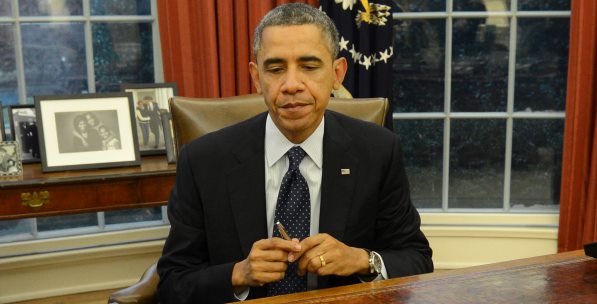U.S. President Barack Obama headed to Asia for multi-country tour that will include Japan, South Korea, the Philippines and Malaysia.
In this long overdue and previously cancelled trip, Obama’s primary goal will be to give the impression Asia still matters to the U.S., the pivot is real and Asia Pacific remains a foreign policy and security priority. However, the fact Obama needs to reassure U.S. allies in Asia demonstrates the degree of backtracking in U.S. policy toward Asia Pacific, but the visit still will have some serious geopolitical repercussions in the region. It can even generate a new label for U.S. policy in Asia.
Since the first years of his presidency, Obama’s Asia policy faced significant ups and downs. Part of this was a result of the difficulty in defining and operationalizing policy toward Asia. In the last five years, policy toward Asia Pacific has been given different labels, including “strategic reassurance,” “Asia pivot” and “rebalance.” When it was put forward by the administration, the policy was described as an integration of forward deployed diplomacy, military redeployment and economic statecraft. When President Obama paid his first visit immediately after the election in November 2012 to three Southeast Asia countries, namely Burma, Cambodia and Thailand, many interpreted this as a reaffirmation of the Asia pivot in the second term of the Obama presidency.
However, since then the White House greatly ignored the Asia Pacific, generating skepticism among U.S. allies in Asia about the real policy priorities of the U.S. Firstly, in his inauguration speech, President Obama did not say much about foreign policy and later during his address to the U.N. General Assembly in September 2013, he stated that his foreign policy goals in the remaining part of his second term will be brokering an agreement between Israelis and Palestinians and stopping Iran’s desire to produce nuclear weapon, which signaled a refocus on the Middle East. More importantly, in October 2013, Obama cancelled a previously planned Asia trip due to the crisis regarding the federal government shutdown. Many interpreted these developments as the end of the “Asia pivot” in U.S. foreign policy.
Now, after six months and in the midst of serious international crises in different parts of the world including in Ukraine and Syria, President Obama decided not to reschedule his trip this time. Obama will be met with mixed feelings in Asian capitals. Now there is an increasing degree of skepticism regarding U.S. goals in the region. Obama will need to make the statement that he did four years ago at an APEC summit in Hawaii and persuade U.S. allies about the U.S. commitment to the region. The second challenging issue for Obama during this visit will be China.
During the weeklong trip, Obama will be the elephant in the room. There are complicated security and military tensions and territorial disputes between U.S. allies and China. U.S. allies will expect a firmer U.S. stand against China in these policy areas.
On the other hand, China will be watching the trip very closely to see what the U.S. and its allies are trying to accomplish in a region that Beijing is willing to turn into its own zone of influence. While trying not to antagonize China, the biggest trading partner of not the U.S. but most of the U.S. allies in Asia, during this specific visit President Obama will try to clarify U.S. policy in several issue areas, including but not limited to the territorial and maritime claims of China in the South China Sea and East China Sea, which is at the heart of a dangerous standoff between China and Japan and Philippines.
Part of this commitment will be the diplomatic visibility of the U.S. in this region in order to temper such escalations in a timely manner and resolve conflicts among allies.
The high-level trilateral meetings between Japan, South Korea and U.S. leaders were an important starting point for this process.
In addition to these military and political aspects, the e
In this article
- Foreign Policy
- Opinion
- 2012
- 2013
- Asia
- Barack Obama
- China
- Islamic Republic of Iran
- Israel
- Malaysia
- Middle East
- Nuclear weapon
- Palestine
- Republic of Korea
- Syria
- Syrian Civil War
- Syrian Conflict
- Syrian Crisis
- U.N.
- Ukraine
- United Nations (UN)
- United Nations General Assembly (UNGA)
- United States (US)
- US Foreign Policy
- US President



